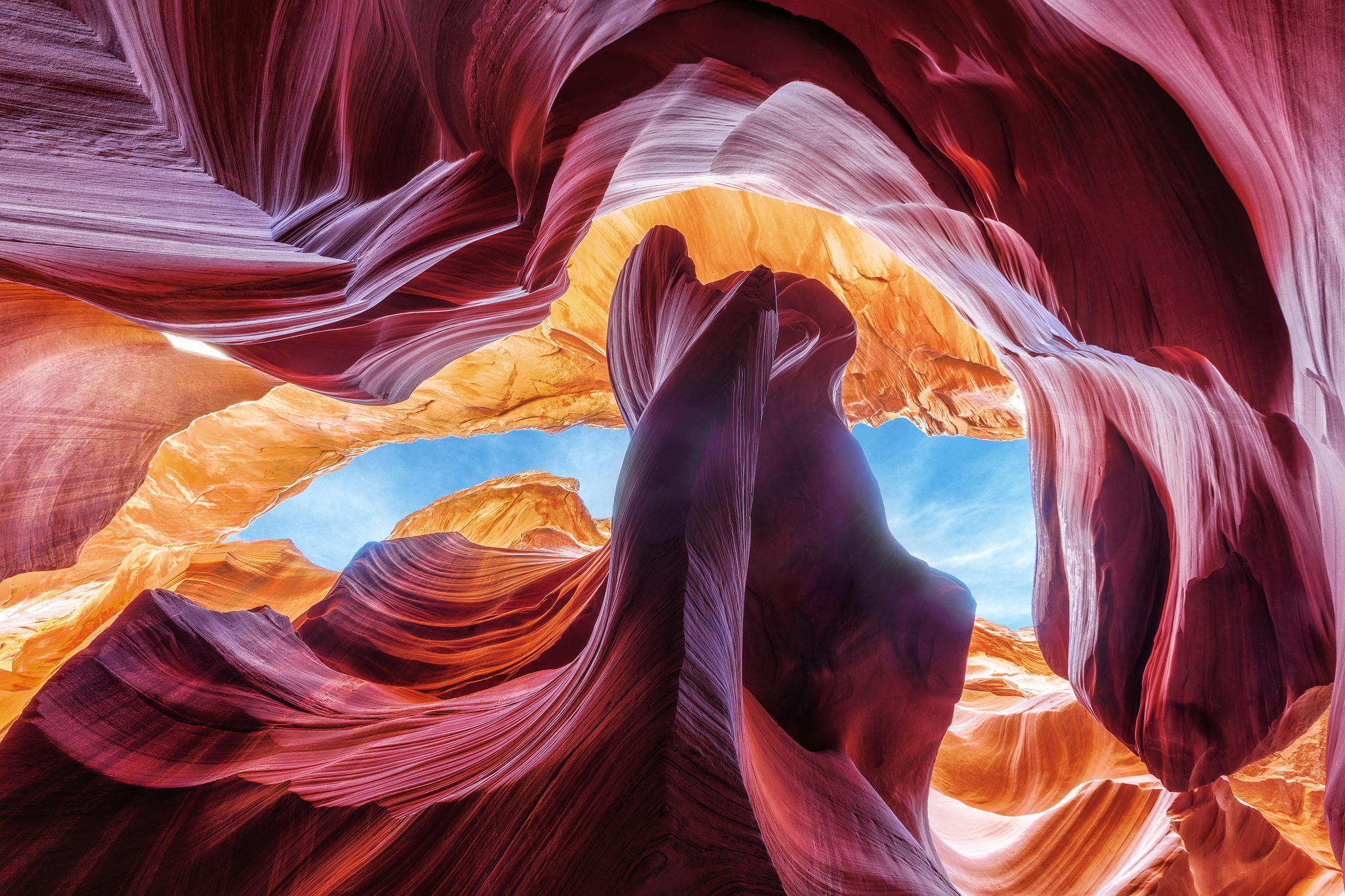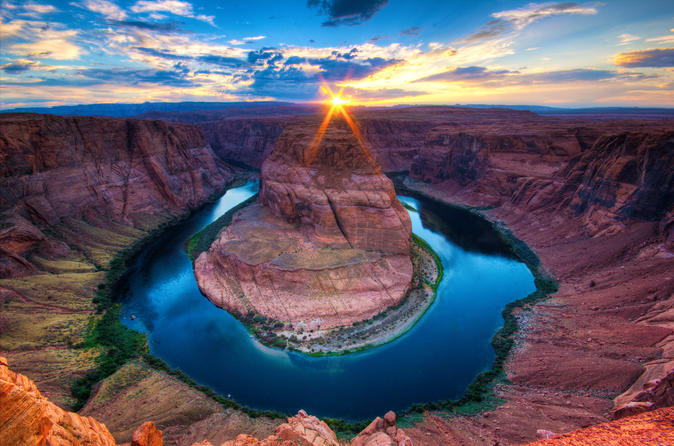
Antelope Canyon is located near Page on Navajo Nation land, just outside Glen Canyon National Recreation Area and close to AZ 98 a few miles east of town (at milepost 299). Antelope is the most visited slot canyon in the Southwest, partly because it is easily accessible and by far the most publicized, and also since it is extremely beautiful, with just the right combination of depth, width, length, rock color and ambient light; many other slot canyons are deeper, narrower or longer, and some have rock that is even more colorful and sculptured, but here conditions are ideal.

Location
The seasonal stream of Antelope Creek flows into Lake Powell 3 miles east of Page in far north Arizona. Most of the watercourse is wide and sandy, but it forms two sections of slot canyon near the lake (Upper and Lower Antelope Canyon), separated by several miles of flat desert terrain. Both may be approached from AZ 98; the upper canyon (also known as Corkscrew Canyon) is reached at the end of a very sandy 2 mile 4WD track south of the road beginning near milepost 299, and it is this part which is usually visited. Lower Antelope Canyon extends between AZ 98 and the lake, and is reached by a short track northwards leading to a parking area from where the escorted tours depart.

Permit
To visit either part of Antelope Canyon is expensive. There is a fee of $6 for a standard permit required to enter Navajo territory, and an additional charge is due to the families who own the land around the canyons and regulate all access - the cheapest is currently (2015) $25 for the either the popular upper section or the longer lower canyon. This is the cost to travel to the canyons in a Navajo jeep; organized tours with a guide cost rather more, as do peak time visits (departing 10 am to midday). For the upper canyon the fee is paid to officials at the side of AZ 98 near the start of the track, and is now apparently only good for 2 hours, with longer visits costing an extra $5 per hour. The fee to enter the lower section is collected by attendants at the carpark near the canyon edge. These amounts will doubtless increase as the Navajo continue to exploit the popularity of the canyon.

When approaching upper Antelope Canyon, there is no obvious clue as to its location. The trail seems to end at the base of a red sandstone plateau about 20 yards high, but the sight of an Indian jewelry stall soon indicates its position - the entrance is a narrow curved slit in the cliffs only a few feet wide. Once inside, the temperature drops as much as 20 degrees as the visitor enters one of the most beautiful of all natural formations. The sunlight filtering down the curved sandstone walls makes magical, constantly changing patterns and shadows in many subtle shades of color. Some sections of the canyon are wide and bright, while others are narrower and more cave-like, with no light reaching the sandy floor. After only 150 yards or so, the canyon becomes suddenly much shallower near the top of the plateau. It may take only 3 or 4 minutes to walk through, but the canyon is well worth the arduous trek or expensive journey required to get there. Pictures taken here adorn camera shops and photographic manuals throughout the world, and usually there will be many people waiting with tripods and light meters trying to compose the perfect shot, and grumbling when other people walk in front of their two minute exposure. There are other equally short but pretty narrows further upstream, though these are not open to visitors.

Lower Antelope Canyon
The lower canyon is longer and deeper than the upper section, but also slightly more challenging, requiring climbing down ladders in some places to descend several sheer drops. It was here that 11 people were drowned in a flash flood in August 1997, when water 50 feet deep from a thunderstorm 5 miles away swept through the canyon, eventually deepening it by 4 feet. Lower Antelope Canyon was closed for 9 months before reopening with improved safety features, and now all visitors must now be accompanied by a guide. Both parts of the canyon are still beautiful, but any sense of adventure or tranquility is long since gone - best to try one of the hundreds of other Southwest slot canyons for these qualities. The nearest alternative, free except for the standard Navajo hiking permit, is lower Water Holes Canyon, the section west of US 89.



